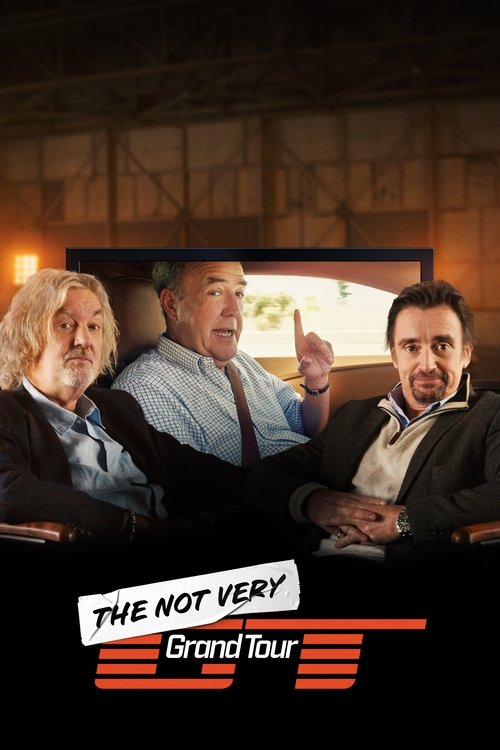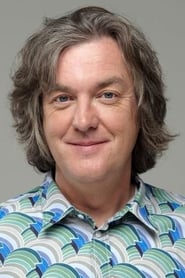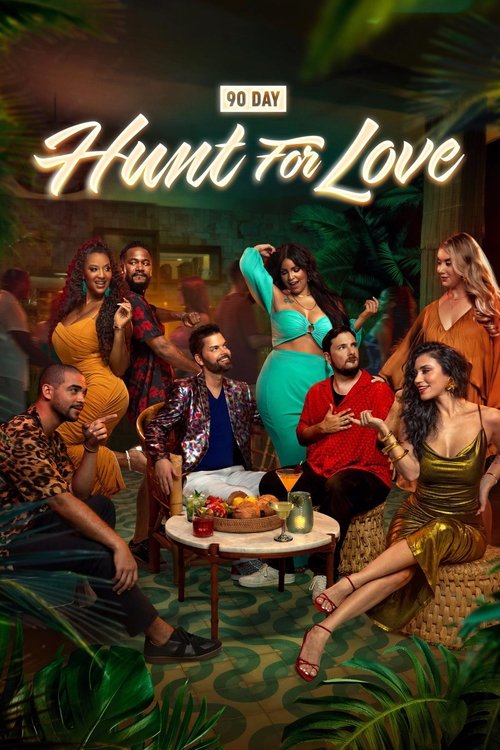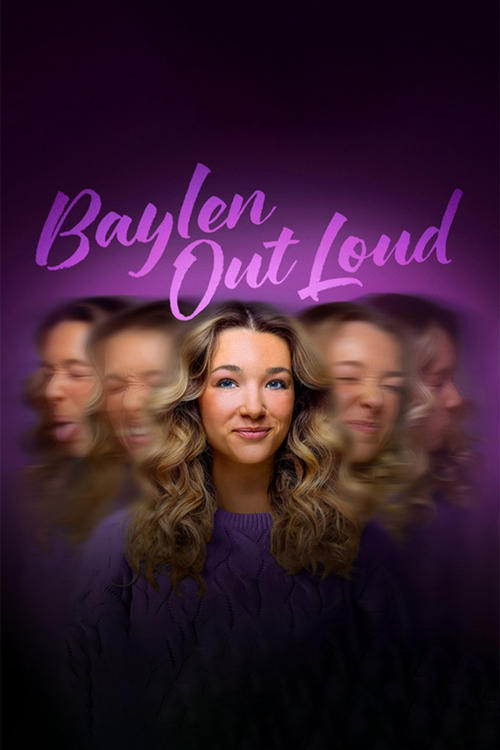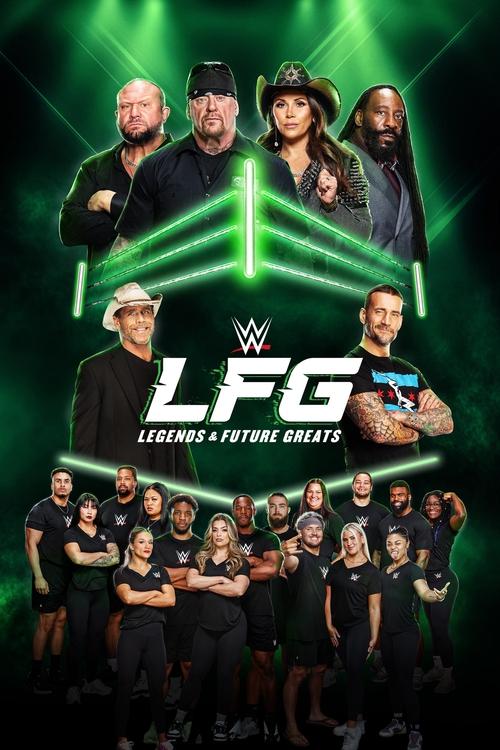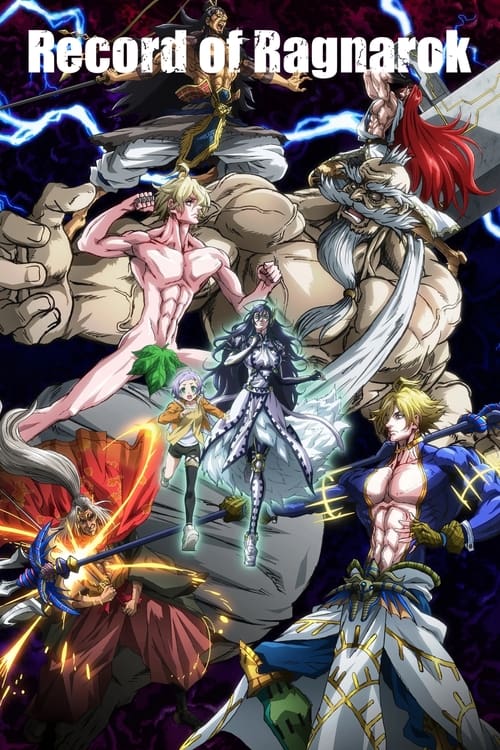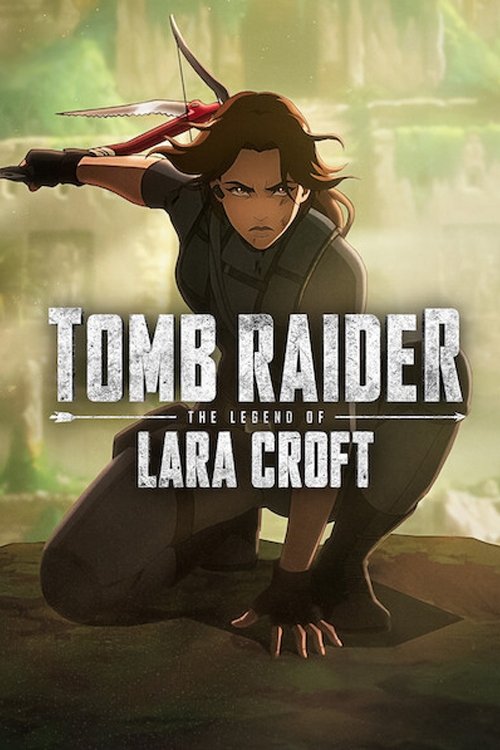
Ask Your Own Question
What is the plot?
The Not Very Grand Tour Season 1 (2025) is a documentary-style series featuring Richard Hammond and James May revisiting classic automotive adventures from their past work with Jeremy Clarkson. The show is structured as a nostalgic journey through the best moments of The Grand Tour, using archive footage and test drives, with Hammond and May providing commentary and reflections.
The series opens with Hammond and May in a deserted hangar surrounded by a few cars, setting a reflective and somewhat subdued tone. They introduce the theme of celebrating the internal combustion engine, emphasizing its power and cultural significance. The first major sequence takes them to Detroit, where they explore the city's muscle car heritage. They rummage through a collection of modern muscle cars, testing and discussing their features and performance. This segment includes driving scenes on the streets of Detroit, capturing the raw sound and feel of the engines, and highlighting the city's automotive legacy.
Following Detroit, the show features a segment on the "hypercar holy trinity," showcasing three of the most iconic and powerful hypercars. Hammond and May provide insights into the engineering marvels and driving experiences of these vehicles, interspersed with archival footage from previous Grand Tour episodes where these cars were tested and raced.
Next, the series presents a city sprint in a Bugatti, revisiting a high-speed urban driving challenge. The sequence details the preparation, the intense driving moments, and the reactions of Hammond and May as they push the car to its limits in a controlled but thrilling environment.
The show then shifts to a more unusual vehicle: the world's craziest tank. Hammond and May explore the tank's capabilities, including its off-road performance and unique features. They demonstrate the tank in action, navigating difficult terrain and performing maneuvers that highlight its power and versatility.
The final major sequence is a race between the past, present, and future of automotive technology. Hammond and May set up a comparative challenge involving classic cars, modern vehicles, and concept or electric cars representing the future. The race unfolds with detailed descriptions of each vehicle's performance, the strategies employed, and the outcomes, emphasizing the evolution of automotive engineering.
Throughout the series, Hammond and May intersperse their commentary with behind-the-scenes anecdotes and reflections on their time with Clarkson and the original Grand Tour team. However, the show primarily relies on archival footage rather than new adventures or challenges, focusing on celebrating the legacy of the internal combustion engine and the trio's shared history.
The series concludes with Hammond and May summarizing the enduring appeal of the cars and moments featured, expressing a nostalgic appreciation for the era of powerful engines and classic automotive excitement. There is no new narrative arc or dramatic conflict; the show serves as a retrospective tribute to the automotive adventures that defined their careers.
No major plot twists, confrontations, or character-driven decisions occur, as the series is documentary in nature and centered on reflection and celebration rather than fictional storytelling or dramatic progression.
What is the ending?
The ending of The Not Very Grand Tour Season 1 is a reflective conclusion where Richard Hammond and James May wrap up their nostalgic journey through classic automotive adventures, celebrating the internal combustion engine's legacy with a final montage of memorable moments and test drives, leaving viewers with a sense of appreciation for the past and the characters' enduring passion for cars.
In detail, the final scenes unfold as follows:
The episode opens with Richard Hammond and James May standing in a spacious, somewhat deserted hangar filled with a few iconic cars from their past adventures. They begin by revisiting some of the most thrilling and memorable moments from The Grand Tour, focusing on the glory of the internal combustion engine. The atmosphere is nostalgic, with both hosts sharing light banter and reflections on the significance of the cars they drove and the places they visited.
They highlight the "hypercar holy trinity," showcasing clips of the fastest and most exotic cars they tested, emphasizing the engineering marvels and the visceral experience of driving these machines. This is followed by a segment on muscle cars in Detroit, where they recall the raw power and cultural impact of American muscle cars, accompanied by footage of roaring engines and street runs through the city.
Next, the narrative shifts to a city sprint in a Bugatti, capturing the blend of speed and precision that defines the brand. The hosts comment on the thrill and challenge of pushing such a car to its limits in an urban environment.
The scene then transitions to the world's craziest tank, a unique and humorous highlight that contrasts with the sleek hypercars, showing the hosts' playful side and their willingness to explore unconventional vehicles.
Finally, the episode culminates in a symbolic race between the past, present, and future of automotive technology. This race serves as a metaphor for the evolution of cars and the ongoing passion for innovation despite changing times.
Throughout these scenes, Hammond and May's camaraderie and shared enthusiasm for cars are evident, even as they acknowledge the changes in the automotive world and their own careers. The episode closes with them standing together, looking at the cars around them, expressing gratitude for the journey and the fans who have followed them.
Regarding the fate of the main characters:
- Richard Hammond and James May remain united as co-hosts, continuing their shared passion for cars and storytelling, albeit in a more reflective and archival format rather than new adventures.
- Jeremy Clarkson, while part of the legacy, is notably absent from the hosting in this season, with Hammond and May carrying the narrative forward.
This ending encapsulates a respectful farewell to an era of automotive enthusiasm, emphasizing nostalgia, legacy, and the enduring bond between the hosts and their audience. It does not introduce new conflicts or dramatic resolutions but rather celebrates the past with warmth and appreciation.
Is there a post-credit scene?
The TV show "The Not Very Grand Tour," season 1 (2025), does not have a traditional post-credit scene. The series is primarily a nostalgic clip show featuring James May and Richard Hammond commenting on archival footage from their previous motoring adventures, with Jeremy Clarkson appearing only in older clips. The format focuses on retrospective content rather than new narrative scenes that would typically include post-credit material.
The show is described as a motoring comedy documentary with a reflective tone, and the studio segments are set in a deserted hangar with a few cars, creating a somewhat somber but thoughtful atmosphere. There is no indication from available sources that a post-credit scene exists or that any additional footage plays after the credits.
In summary, "The Not Very Grand Tour" season 1 does not feature a post-credit scene; it is a clip-based retrospective without new narrative content extending beyond the main episode.
Is this family friendly?
The Not Very Grand Tour (Season 1, 2025) is generally family friendly, as it is a nostalgic automotive documentary series featuring James May and Richard Hammond revisiting past adventures and test drives with archive footage. It focuses on cars, especially celebrating the internal combustion engine, and includes lighthearted commentary and humor typical of the hosts' style.
Potentially objectionable or upsetting aspects for children or sensitive viewers might include:
- Some mild language or humor typical of Jeremy Clarkson, Richard Hammond, and James May's style, though this is less prominent since Clarkson is mostly absent in this season.
- Loud engine noises and car-related excitement, which might be intense for very young or noise-sensitive children.
- Occasional scenes of fast driving or car stunts, but these are archival and not graphic or violent.
There are no reports of explicit content, violence, or adult themes that would make it unsuitable for family viewing. The show is more of a retrospective clip show with commentary rather than new dramatic or controversial content.
Does the dog die?
In the TV show titled The Not Very Grand Tour, season 1 (2025), there is no information or indication that the dog dies. The search results primarily discuss the death of Richard Hammond's dog TG, who was associated with Top Gear, a different show, and not The Not Very Grand Tour itself. There is no direct mention or plot detail about a dog dying in The Not Very Grand Tour season 1.
Therefore, based on available information, the dog does not die in The Not Very Grand Tour, season 1.

